by Winding Pathways | Nov 17, 2022 | (Sub)Urban Homesteading, Flowers/Grasses, Garden/Yard, Garden/Yard
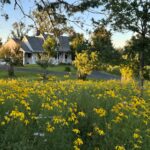
Prairie flowers dance on a knoll.
Motorists passing our yard must think we have a messy yard. Instead of the clipped and sprayed yards of neighbors, ours is a dancing field of tall wildflowers and native grasses. Many consider them “weeds”. Our yard is unconventional, healthy, and beautiful. It attracts desirable wildlife and is dynamic. Visitors, especially children, love walking through six-foot-tall grasses on our labyrinth pathway. To us, pollinators and birds, it’s heaven, not a mess. It is a naturally landscaped yard.
Sugar Grove Farm Paves the Way
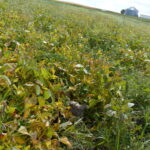
The space between crops is productive in a different way.
Last summer Rich toured Rodale Institute’s plantings at Sugar Grove Farm near Cedar Rapids. Researcher Linda Sturm led him and farmers to plots of vegetables and fields of corn and soybeans before stopping by a long row of what looked like weeds with wildflowers mixed in.
“This is an unproductive area, wasted ground, that could have been planted to corn,” a farmer remarked. Linda countered that it is likely the most productive land on the farm. “It’s the home base for pollinators and birds. They forage in nearby crops to collect nectar and eat insect pests,” she said.
Natural Yards Can Reduce Pests
Same thing at Winding Pathways. Our vegetable garden is amazingly productive despite never using insecticides and only mowing sparingly. Butterflies visit squash, cucumbers, okra and other crops, spreading pollen while wrens constantly forage for insects to feed their hungry young.
A clipped and sprayed lawn is only slightly more attractive to wildlife than pavement. There’s no place for tiny beneficial creatures to live.
-
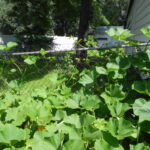
-
Birds and insects forage in the garden.
-
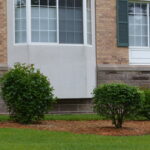
-
This yard offers little to wildlife.
Create Pollinator Patches
Homeowners with small yards can help pollinators and birds by creating islands or strips of welcoming habitat, perhaps in the backyard or along the property line. Linda Strum created habitats within farm fields, and suburban homeowners can enjoy the same benefits. Worry about the neighbor’s reaction? Just create a habitat in the backyard out of sight of passersby.
-
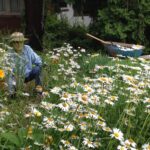
-
Native and cultivated plants brighten a front yard.
-
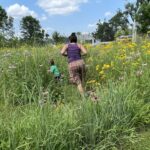
-
Adults and children revel in the natural yard.
-
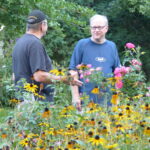
-
Converting a yard to more natural plants brings joy.
Adding birdhouses adds to wildlife fun. We love watching house wrens hunt insects and bring their catch to their babies nestled in a wooden birdhouse dangling down from our porch ceiling.
Given a bit of imagination and fun work even the smallest yard can appear tidy, be aesthetically diverse, and provide homes for butterflies and wondrous spaces for kids and adults.
by Winding Pathways | Sep 22, 2022 | (Sub)Urban Homesteading, Amphibians/Reptiles, Birds, Garden/Yard, Nature
We hadn’t seen either for a while but one September morning there they were. Mr. Toad and Ms. Wren.
Mr. Toad
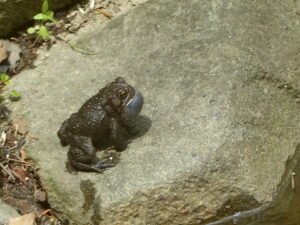
Toads sing loudly day and night.
All summer Mr. Toad contentedly lived beneath a tomato plant snacking on an occasional juicy bug. Ms. Wren meanwhile forayed about the yard snatching bugs and feeding her brood. In September Mr. Toad’s favorite tomato plant died back, probably tired after producing plenty of tasty fruits and no longer able to give Mr. Toad a worthy hiding place. And, after the babies fledged, Ms. Wren worked the prairie grasses and woods.
On that September morning, Rich noticed sweet potato leaves trembling a bit. He brushed aside the foliage and there was Mr. Toad out seeking breakfast.
The fall equinox is almost here. With it comes the short days and cool temperatures that make garden plants shrink. Mr. Toad is cold-blooded. Summer’s moist heat is to his liking, but before the cold comes, he must retire for the winter. So, down he goes, digging into the soil to find a place to snooze through the winter, no doubt dreaming about next summer’s juicy bugs under a new tomato plant.
We bid Mr. Toad adieu for the winter and said, “Thanks for helping with our gardening. See you next spring.”
Ms. Wren
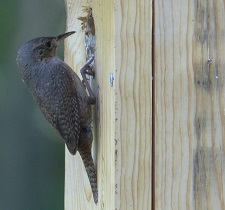
Checking the nest box.
Mr. Toad isn’t our only garden worker. Last winter we set up a wren house and by May Ms. Wren and her partner moved in. The couple raised two broods of ravenous babies in our garden. They enjoy the same fare as Mr. Toad but hunt more in our crop’s leaves instead of under them. The industrious parents spend nearly every daylight hour combing the garden and beyond for insects to feed their chicks.
Our last brood of garden wrens fledged in mid-August but stuck around a while. The family hunts insects in the woods behind the house but by the fall equinox they’ll get the urge to hop on a north wind some night and head south. When we’re shoveling snow, they’ll be snacking on bugs in a warm place.
Parting is Sweet Sorrow When Mr. Toad and Ms. Wren Bid Us Adieu
It’s hard to tell exactly when our wrens leave. Sometimes they linger into October but eventually one of us will say, “I haven’t seen or heard a wren for a while.” Yup, they’ve left for the season. We also bid them adieu and say, “Come back. See you next spring.” We miss Mr. Toad and Ms. Wren for the good work they do and for knowing we provide safe homes for them. We will put up wren boxes come March of next year and search for Mr. Toad sometime when the ground thaws.
About the Equinox
The Fall (autumnal) equinox is on or near September 21st. It’s one of two days when the sun crosses the celestial equator and every place on earth receives approximately 12 hours of daylight and 12 hours of darkness. The other is around March 21, the Vernal equinox. After the fall equinox the dark hours push daylight away until December 21 when days again begin to lengthen in the Northern Hemisphere. Plants and animals are super sensitive to day length and more aware of slight changes than most people.
by Winding Pathways | Aug 13, 2020 | (Sub)Urban Homesteading, Birds, Garden/Yard, Nature
This summer we enjoyed watching wren couples set up housekeeping at Winding Pathways. One pair nested in a small box under our porch ceiling, while another chose a box a few feet outside the dining room window.
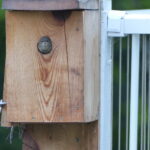
The world is big, bright and intriguing.
We watched these tiny, industrious birds make dozens of trips bringing sticks to make nests. Then, for a few weeks, we saw them infrequently. Only the female visited to lay eggs. Once her clutch was complete, she incubated them for a couple of weeks until they hatched. Then our fun began.
Wren parenting is hard work. Every two or three minutes one parent or the other brought juicy caterpillars and leggy bugs to feed the rapidly growing brood. Baby wrens hatch helpless and blind, but in just a couple of weeks, they grow almost as big as mom and dad. Finally, it’s time to fledge.
On the morning of August 9, we sat on the deck watching a young wren peer out the entrance hole, begging for breakfast. Mom or dad brought bugs, but mostly they urged the youngster, and its siblings, to take the plunge and abandon the only home they knew.
It’s scary. The nest is secure and safe. Mom and dad bring food and keep it clean. Then they expect their kids to leave and earn their own living in a world fraught with danger.
Our young wrens peered outside for a day or two before fluttering into the world. Huddling in low lying vegetation they called hungrily. Fortunately for wrens and many other birds, the adults help them out. We continued to hear these “branchers” calling in the nearby woods and caught glimpses of the parents bringing bugs to them. Slowly the babies figured it out.
After a few days, the young re-appeared around the yard, flying awkwardly. They have much to learn, and all sorts of perils to avoid. The parents continue to support them and many will wing south as the weather cools. We’ll watch for their return next April.
This year millions of American teenagers and new college grads are in the same fix as young wrens. Childhood and Youth are over. Peering out the door and knowing they must leave is scary. It’s tough enough to leave home during normal times, but this year coronavirus is making the transition extra challenging.
Young people heading for college don’t know whether classes will even be held. If so, will they be online or in-person? Will college include exposure to a virus that could sicken or kill? Recent high school and college grads seeking a job face different challenges. High unemployment and lurking viruses can make finding work difficult and, perhaps, dangerous. Join the military? Move across the country for a job? That’s perilous, also. Nothing seems safe. Everything’s confusing.
Like the young wrens, parents still help guide their offspring, providing support, advice, and encouragement as the “young” leave the nest. We send good wishes to the youthful wrens that started life at Winding Pathways and to young people about to launch into a confusing and challenging world. May they all thrive.
-
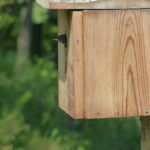
-
This baby is checking out the scenery.
-
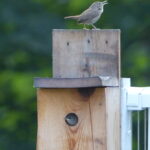
-
Parent encourages the baby.
-
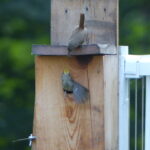
-
The parent dangles tasty morsels, forcing the baby to come outside the nest box.
-
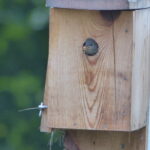
-
This huge bug is a mouthful!
-
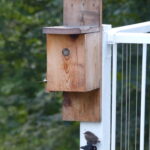
-
A short first flight.
-
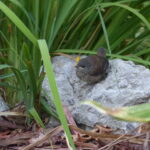
-
This wren fluttered to the ground below the next box.
by Winding Pathways | Jul 30, 2020 | (Sub)Urban Homesteading, Reflections/Profiles, Solitude
Guest Bloggers Reply
Readers offered their activities in The Great Pause. Most were home-centered with some careful forays into society. And, of course, connecting with self and nature.
SA: My mother was in a nursing home in Bettendorf. Visitors were prohibited but I was able to wave to her and blow kisses through a glass door. After 3 weeks of isolation from family, she passed away on March 31. We could not have a proper funeral due to the virus. It was not how I imagined her life would end. My husband still had to go to work every day so my days were spent in solitary isolation.
Gardening Offers Solace
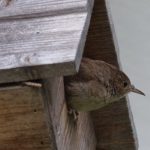
Looking out at the world.
Once the weather warmed up, I spent hours in the garden and puttering in the flower beds. I cleaned out my garden shed and found an old birdhouse one of the boys had built-in Cub Scouts 20 years ago, I painted it and hung it in our ash tree. A wren immediately investigated.
ZOOMing
I had twice-weekly Zoom meetings for an organization I belong to. I acquired the Audible version of Stephen King’s unabridged book “The Stand”–which I read back in the late 70s–but at 1,000 pages, I chose to listen to it instead. (That took 45 hours.) Listening to it while I cooked, cleaned house, and drove around was entertaining and frightening, considering the subject matter.
Connecting with Nature
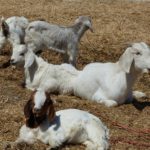
Leisure in the pasture.
Steve and I walked outside every day, hiked the Amana Nature Trail, Pleasant Creek Park, FW Kent Park, and others. On one cold, overcast day, we climbed into the car and drove backcountry gravel roads in the area east of Solon, with no idea where they led or where we would end up. We were rewarded with beautiful pastoral landscapes, green pastures dotted with peeks of sunshine between dark clouds, and a delightful trio of baby goats scampering in a pen next to the road. We were able to get out of the car and interact with them for a while. Such a joy in these dark times to watch new life scamper about, trying out their legs.
“Music Speaks Louder Than Words….”
JH: Well, I’ve spent almost every day since the middle of March on return from Florida playing every single piece of music that’s been stacked in the closet for many moons. I’ve kept certain pieces aside so that I can call a friend, a relative, an acquaintance, a business person, and play and sing a song to them over the phone. Some of the music is from 1897 and much of it is from the early 1900s to the mid-1970s. It’s been a total blessing to me and everyone has been most appreciative and one friend shed a few tears because her mom and dad’s favorite song was “Cruising Down the River” which I didn’t know when I selected it.
I’ve also written numerous Corner Shot articles and sent them to the Roanoke Times. Several of my articles have been posted in the master gardener’s newsletter. I’ll keep on keeping until we can mingle and hug one another again.
Self Care & Connecting
KK: Submitted to cataract surgery and nursed eyes back to health. Put in many eye drops. Learned a new healing skill. Spend too many hours on Zoom. Wore and washed the same few clothes over and over. I practiced gratitude.
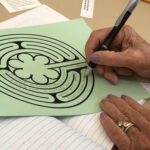
Calming through writing.
Joined a new church in another city via Zoom. Ventured out to a couple of restaurants open at 50% and ate outside. Found a Tai Chi class on the labyrinth at the park. Made finger labyrinths. Washed clothes. Did much personal growth work. Wrote someone a letter and mailed it via snail mail. Received a letter in return. Planned a retreat that may not happen this year. Cleaned out desk and found someone else’s treasure, mailed it to them. Washed clothes. Did online Yoga. Washed more clothes….
by Winding Pathways | Apr 4, 2019 | Birds, Garden/Yard, Nature
As lingering snow banks melt we look forward to the arrival of our favorite spring guests. They arrive in late April, but we put out the welcoming mat a month ahead.
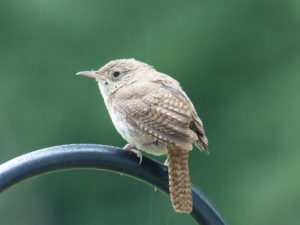
We welcome the wrens each spring
For many years a pair of house wrens have nested right outside our dining room window. We laugh at their bubbly energy and enjoy watching them bring caterpillar after caterpillar into their home to feed growing babies. In some years we get to watch as the youngsters peer outside their nest box before taking their first awkward and short flight.
How Many Species live in the United States?
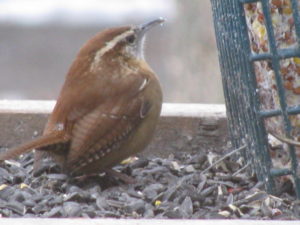
Sometimes the Carolina wrens stay around in winter.
House wrens are only one of six wren species that live in the United States. We’re fortunate to have both house and Carolina wrens in our
yard. Carolinas don’t migrate, so we sometimes see one feeding on suet in winter. House wrens are, perhaps, wiser and leave Iowa each October to winter down along the Gulf Coast.
It’s almost magical when the house wrens return each late April. Suddenly the air is filled with their delightful song. We usually hear them before we spot their nervous energy as they seek a nesting location. The nest boxes we set up in March are their welcome mat.
Making a Birdhouse
Few birds are as easy to lure into a nest box as house wrens. In winter we make new ones out of scrap lumber. Wrens aren’t fussy. Many elaborate nest boxes can be purchased but all it takes to make one is a four-foot section of 1X6 inch pine lumber, a few nails, and simple tools. We like the plans posted on Birdwatching Bliss.
We’re crude carpenters but the birds don’t seem to mind if the joints aren’t perfect.
Many wren house plans call for a circular opening of 1 1/8th inch but we’ve had great success with a one-inch hole. Larger holes welcome messy house sparrows. We also never place a perch in front of the entry hole. Wrens are acrobatic flyers and have no trouble entering a hole without a perch nearby.
Entertainment
Few birds are as entertaining as bubbly house wrens, but there’s another reason we love having them around. They’re voracious predators of insects that love feasting on our garden crops, so our wren tenants help boost our vegetable crop.
Wrens start nesting almost as soon as they arrive. Their nest is carefully made of small sticks that nestle a few reddish spotted eggs that hatch in about two weeks. Babies grow like fury and leave the nest by the end of June. We then clean the nest out of the box, and often the eager parents produce a second brood in the late summer.
No bird is as likely to fascinate a child as a pair of bubbly wrens nesting in full view just outside the window.
-
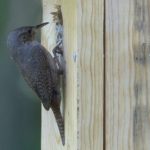
-
Checking the nest box.
-
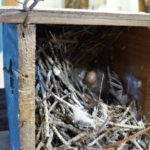
-
Eggs are spotted reddish
-

-
Looking out at the world.























